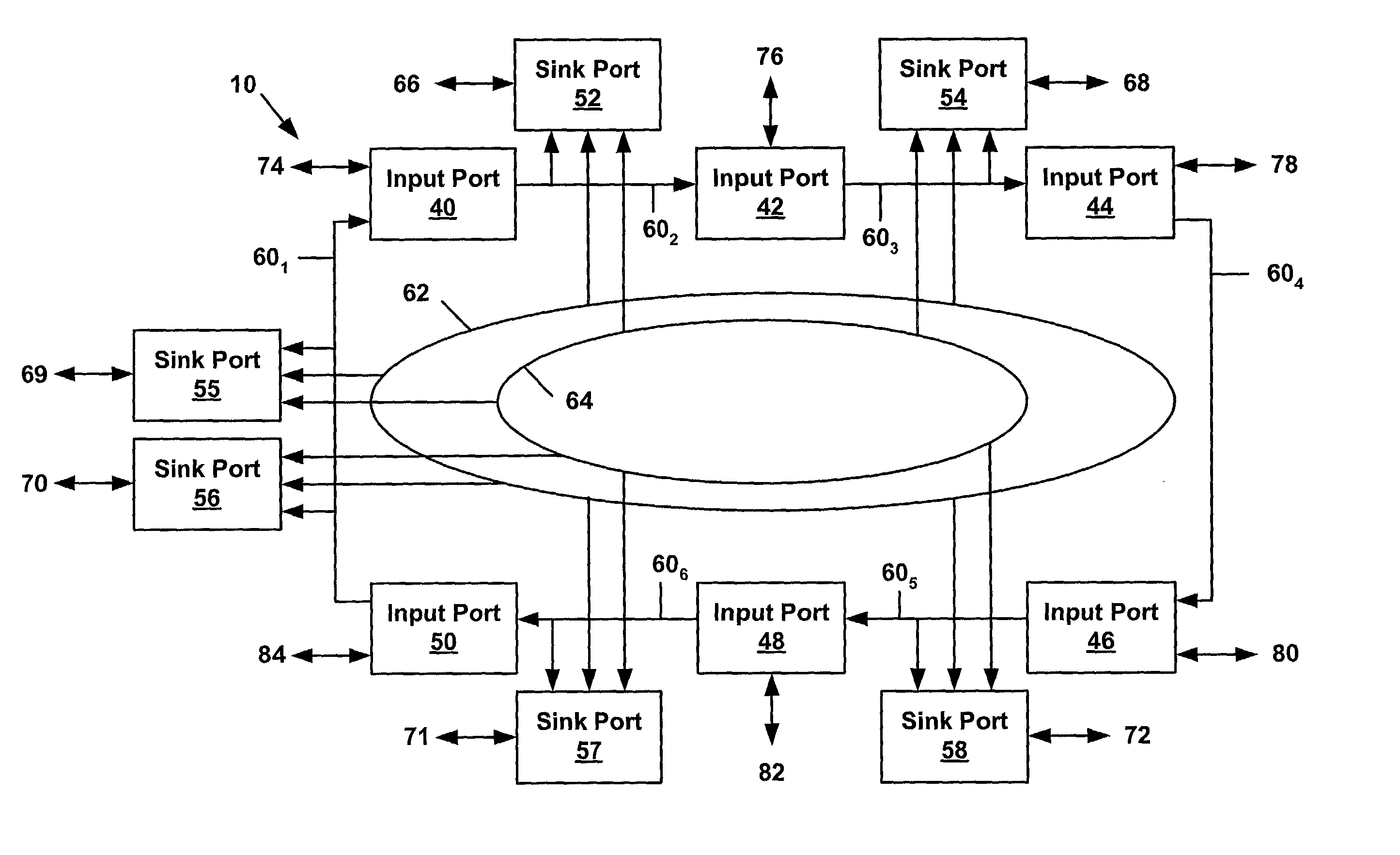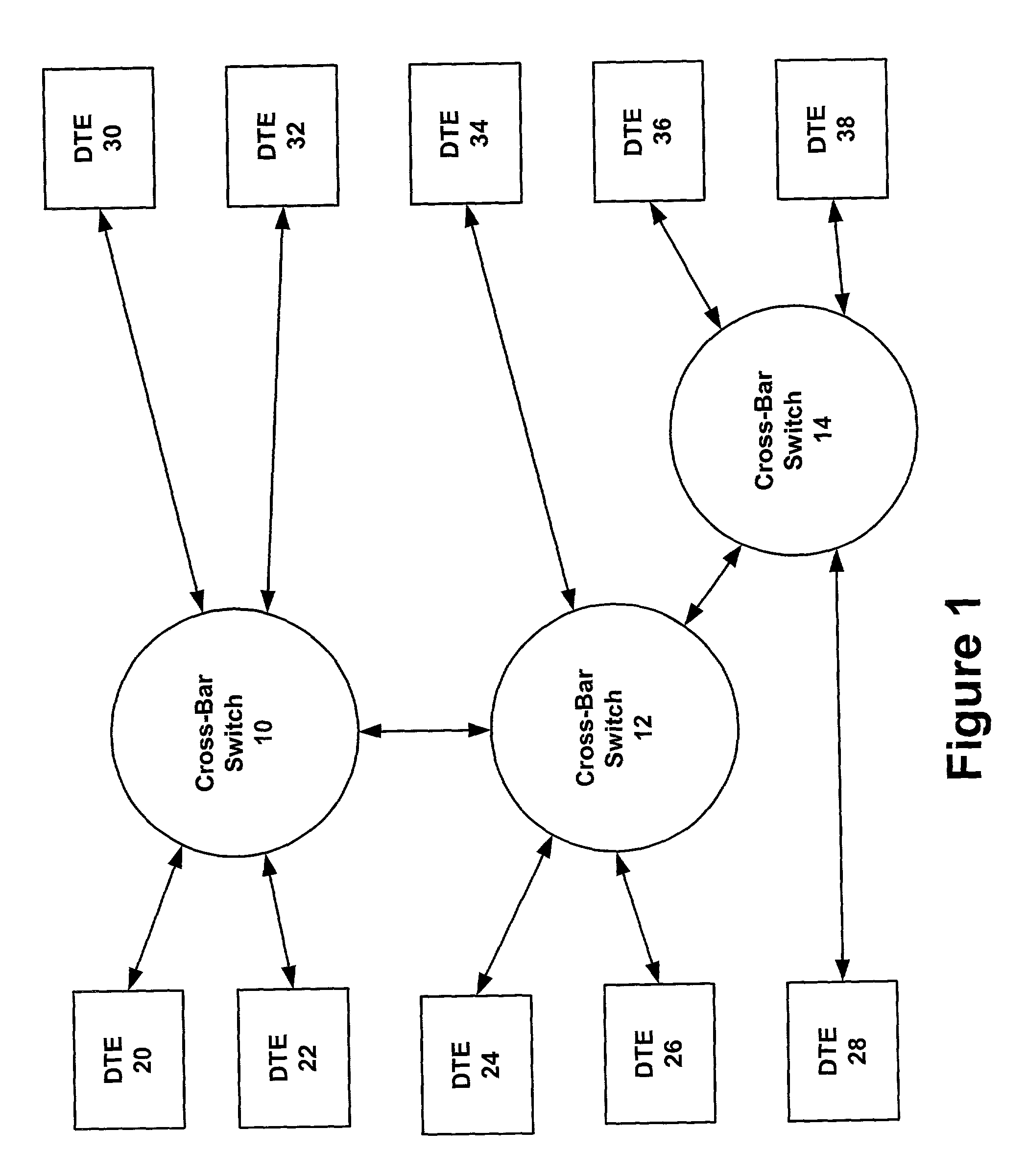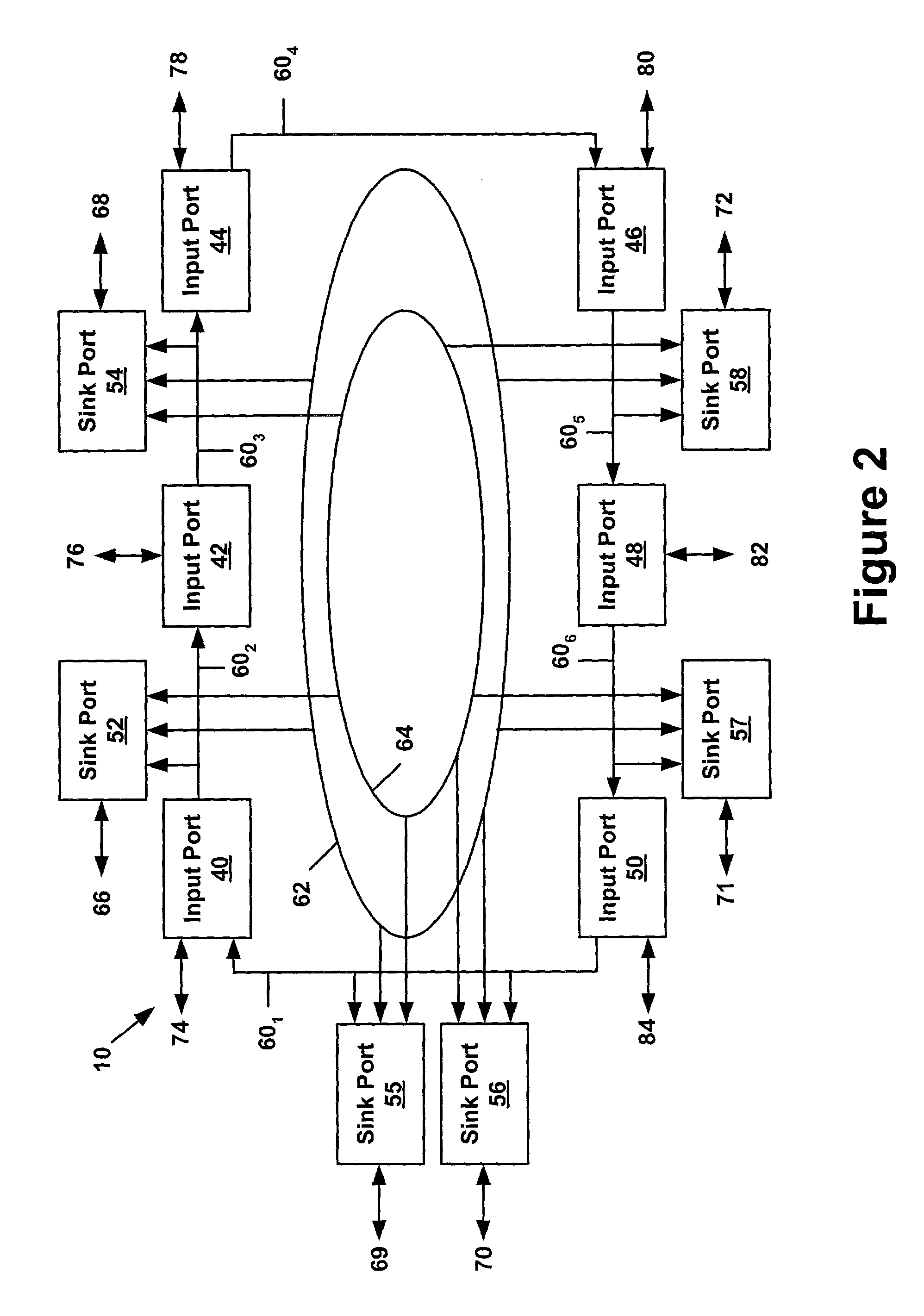Cross-bar switch supporting implicit multicast addressing
a cross-bar switch and multi-cast addressing technology, applied in the field of routing data, can solve the problems of difficult to meet timing goals and physical design criteria, traditional cross-bar switches consume significant power and circuit space, and achieve the effect of improving memory utilization efficiency and efficient bandwidth allocation managemen
- Summary
- Abstract
- Description
- Claims
- Application Information
AI Technical Summary
Benefits of technology
Problems solved by technology
Method used
Image
Examples
Embodiment Construction
A. System Employing a Cross-Bar Switch
[0039]FIG. 1 illustrates a system employing cross-bar switches 10, 12, and 14, which operate in accordance with the present invention. Cross-bar switch 10 is coupled to transfer packets between cross-bar switch 12 and data terminal equipment (“DTE”) 20, 22, 30 and 32. Cross-bar switch 12 is coupled to transfer packets between cross-bar switches 10 and 14 and DTE 24, 26, and 34. Cross-bar switch 14 is coupled to transfer packets between cross-bar switch 12 and DTE 28, 36, and 38.
[0040]DTE is a generic name for a computing system including a processing engine, ranging from a complex multi-processor computer system to a stand-alone processing engine. At least one example of a DTE is multi-processor unit 10 described in U.S. patent application Ser. No. 09 / 900,481, entitled Multi-Processor System, filed on Jul. 6, 2001, and hereby incorporated by reference.
[0041]In one embodiment, all of the elements appearing in FIG. 1 reside in the same system and ...
PUM
 Login to View More
Login to View More Abstract
Description
Claims
Application Information
 Login to View More
Login to View More - R&D
- Intellectual Property
- Life Sciences
- Materials
- Tech Scout
- Unparalleled Data Quality
- Higher Quality Content
- 60% Fewer Hallucinations
Browse by: Latest US Patents, China's latest patents, Technical Efficacy Thesaurus, Application Domain, Technology Topic, Popular Technical Reports.
© 2025 PatSnap. All rights reserved.Legal|Privacy policy|Modern Slavery Act Transparency Statement|Sitemap|About US| Contact US: help@patsnap.com



